Living for the weekend, watching the clock tick, work is just a paycheck are some popular mantras the global workforce is living by, as per Gartner’s State of the Global Workforce Report 2022.
With just 21% of employees finding work engaging and about 33% claiming to thrive as far as their overall well-being is concerned, work seems to have lost its sheen for most employees.
According to the report, well-being and engagement were on an upswing before the pandemic, but are stagnant now.
Relationship with work, and at the workplace, has transformed. Many quiet and not-so-quiet trends have taken over the workplace by storm. Great resignation, quiet quitting, quiet hiring, quiet firing, career cushioning, and now quiet thriving.
No, it’s not the semantics of the language at play here as the race for the next buzzword of 2023 heats.
Psychology is at work behind the scenes. The uncertainties unleashed by the pandemic and, now, the current inflationary and recessionary environment (including conflicting macro factors such as talent shortage, rise of generation Z with all their expectations, emergence of socio-economic concepts, like diversity, equity and inclusion (DEI), and overall increase in consciousness) are transforming workplace behaviors in unimaginable ways.
Amid the disruption, quiet thriving is the latest to float around. It is a growing trend replacing quiet quitting.
Quiet quitting–doing just the bare minimum, taking no additional responsibilities–found a lot of buyers. It helps people achieve better work-life balance, take control of their profiles and avoid burnout, etc.
Of late, though, the approach is being questioned for its negative impact.
Doing just the required minimum, over the long run, can be damaging. It leads to demotivation and lethargy—the lack of enthusiasm at work could kill the overall drive to perform.
Enter the more optimistic quiet thriving.
The opposite of quiet quitting, it reflects a relatively optimistic attitude and a positive approach. Insteadof receding into a cocoon to avoid a toxic work environment, quiet thriving is about finding meaning in work.
According to Lesley Alderman, a New York-based psychotherapist, quoted in a Washington Post article, quiet thriving is about “taking specific actions and making mental shifts that help you to feel more engaged on the job.”
The aim is to counter the conventional frustrations by enhancing the engagement component at work. Not doing just the basics to scrape through.
Prudence also demands you tread carefully. Given the vagaries of the job market, it is advisable to make a clean cut only when you have an excellent offer at hand. Until then, the wiser thing to do is to not rock the boat too much—flip-flopping would give wrong ideas to the organization.
Also, as they say, as long as you are in a job, it is better to like your work.
But, wait…is it ok to thrive quietly?
Quiet thriving implies something is not quite right at the workplace. Employees should flourish at the workplace as a first-rate version of themselves. Their fulfillment at work should speak for itself. Where is the need to be quiet and hushed up about it?
But, if this is not the case, it is a huge warning sign for leaders. An employee that is thriving quietly is maybe just waiting to jump the ship at the opportune moment.
This scenario then puts the onus on the leadership.
What steps can leaders take to address the scenario?
Leading a fuller life at workplace: How leaders can help in making the mental switch from quiet thriving to active thriving
Be sensitive to symptoms. Observe. The various quiet trends will become discernible.
Be cued in to notice the dips. Some examples are, performance is stable but not exceeding for an employee otherwise known to outperform; or growing disinterest in taking initiatives; not doing the bare minimum but not going out of the way either in tasks assigned; growing murmurs about dissatisfaction with the workplace, etc.
Dig at the roots, don’t just hack the leaves. Address the cause.
As soon as you notice the signs, the first thing to do is make a noteof what is making people uncomfortable. Is it the nature of work or added roles that are a burden? Is it an overbearing manager, an unresponsive team lead, a toxic culture, or lack of visibility on career growth?
Talk to the employees. Reach out. If they are your direct reports, you can address directly. If not, urge the people second in line to you to reach out to their teams once they notice the changes. HR, too, has an important role to play in creating a responsive environment.
Encourage them to take it up with whomever they feel comfortable: immediate reporting or line manager, maybe escalate it to a higher level, or HR SPOC, etc. You could also provide them a platform where they can express their opinions anonymously.
The aim is to make them feel comfortable enough to share. Giving vent to the steam will lighten the load. Whenever things bottle up, the chances of an outburst increase.
Urge those at senior managerial and reporting levels tobe receptive, not confrontational even if the issue raised is not directly their doing. For example, when work from office resumed in full swing after the pandemic, it posed (and continues to pose) a challenge for many. If this is the issue, be genuinein acknowledging it. Think – is there scope for a hybrid work environment in your organization?
Don’t confront and confound those approaching you. You are looking for a solution. It comes from collaboration. So, while you may have your share of challengestoo, pay equal attention to the plausible solutions you can suggest.
Sometimes, connecting with the mentor could resolve the issue. If career growth is the pain point, they could help in drawing growth plans. They could also give suggestions on other prospects or opportunities within the organization and how to take the career forward.
That which excites, gives energy! The challenges notwithstanding, not everything about a job can be wrong. There would be a few plusses at least.
These could range from being on the client-facing front, or the environment in the office, the peers that bring joy, the overall comfort/security provided by the work environment, to name a few.
See how far work can be tailored around the areas of interest of individual employees. Ask the managers to assign more tasks around these. See if the KPIs or KRAs can be designed around these strengths.
This could include training (conducting new sessions and/or taking part in skill set-enhancement training), working on projects or assignments that may or may not be related directly to work, maybe business development initiatives, or organizational activities, anything.
Focusing on the positives is a great way to train the mind to think right.
It is a matter of triggering the initiative by appealing to their curiosity and willingness to learn or grow. Once this is fixed, employees perform better and, with that, their interest is re-ignited. It sparks their creativity and creative thinking.
Guidance is not enough. Empower your workforce with the right resources and facilities to help them grow. For instance, in certain organizations, unavailability of the required technology is a major irritant and a deterrent to work. You could focus on providing the desired technological tools and support to make work more fulfilling.
Another thing is to offer a comprehensive learning & development program. It could include trainings to enhance their skill set and prepare them for scaling up withing the organization. Scope for internal mobility contributes to building engagement.
Build a workplace culture that is integrative. Provide an environment where they can open up and speak freely without the fear of repercussions.
These measures will help people open up. As they do, they will feel more connected with the organization.
Are there people they (concerned employees, i.e.) can call up at 4 a.m.? If your answer is a yes, you are lucky.
Sometimes the presence of like-minded colleagues and friends at the workplace makes all the difference.
Strengthening workplace relationships requires efforts, though.
Nurture the environment by diluting the strictly work-centric approach. Encourage fun activities and push people to participate in it. You could have designated days, such as Fun Fridays, over which they can bond.
Don’t frown upon water cooler chats or communities as long as these do not interfere with work. People typically strike conversations with their peers here. Connectivity lessens the sting of boredom and people find a reason to stay.
There could be informal circles of like-minded people, or groups and forums, where they can participate openly on topics not related to work. Promote such platforms.
A mind at peace is a mind that wins! Yes, our minds need as much training to think clearly just as we need for a new skill.
Value the mental wellbeing of your people. For example, you could organize sessions on positive thinking or yoga for health and fitness. The impact of these measures is that it trains people in thinking with clarity, in opening up, and in not retreating to their shells or withdrawing when in discomfort. Simple things, like being valued by your organization/colleagues, work.
Encourage people to take breaks to re-energize themselves. Provide a space in the organization, a quiet corner, such as any small meeting room or a logout zone, where they can unwind.
Provide avenues where they can balance their strictly profile-related work with something that can de-stress them. Some examples are CSR initiatives or organization-wide activities.
Sketching, doodling, listening to music, taking short walks, a trip to the office game zone—there are so many ways to beat the monotony of regularity. Encourage your people to avail of these.
Not all barriers divide. Some are necessary to maintain personal space and peace of mind. Employees should know where to draw the line and say ‘no’ for an answer, albeit politely.
Quiet quitting picked up because people felt trampled with work-related demands. There was no concept of personal space. Especially in the work from home environment, it became a bigger menace.
As far as possible, encourage your employees to not bring work home or not carry it on their mind once they’ve called it a day.
Now this could pose a challenge and certain senior profiles may require an individual to be cued in at all times. Also, for a junior employee, it could be difficult to ignore a message from their senior. However, this does not mean that one has to answer all queries or clarifications on the phone immediately.
The aim is to disengage when necessary. Health and sleep are as important—help people prioritize these.
To conclude
Workplace culture and behaviors have transformed drastically since the pandemic. Many workplace-related buzzwords have come to the fore. By the time you are familiar with one, the next has already been buzzed in.
Quiet thriving is one of the latest buzzwords. According to Laura Ellera, a neuroscientist and success coach quoted in Condé Nast (US-based mass media company)’spublication GLAMOUR, human beings are genetically wired to thrive. Doing just the bare minimum to bide the time does not fit in with our sense of purpose. It grates on our nerves, given our inclination to do more.
But, the phrase – quiet thriving – represents a dichotomy. If one has to flourish quietly, it cannot exactly be called flourishing – can it?
Where is the longevity? It’s a short-gap arrangement—keeping engaged until a better opportunity comes my way. What else do I have anyway? Not all jobs are 100% satisfying. May as well make the most of this till I can.
If employees in your organization are quiet thriving, don’t take it lightly. Mistaking it for stability could be wrong.
A leader needs to work constantly to upgrade the organization and workplace culture. True, you cannot meet all expectations at all times. But you sure can meet some most of the times!
Remember, it’s often calm before the storm.


